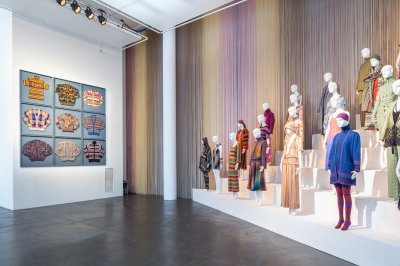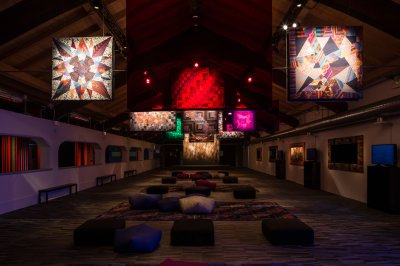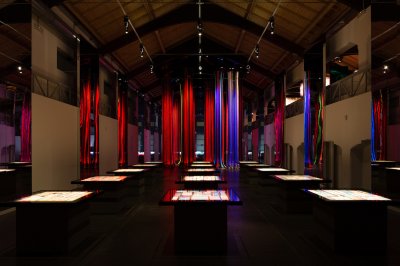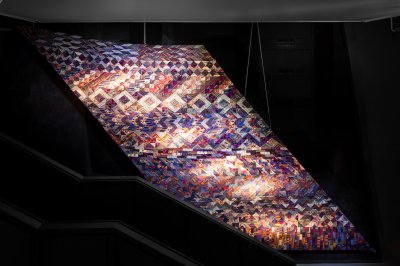MISSONI, ART, COLOUR
 19 April 2015–24 January 2016
19 April 2015–24 January 2016
The Exhibition
The Missoni’s attention to modern art is the underlying theme of this exhibition, which clearly defnes the references to European lyrical and geometrical abstract art, to the Futurism movement and to the non-fgurative research that renewed Italian art af- ter WWII. Visitors are guided along a path that shows how the attention to this artistic context became emotion and passion. This passion animated the Missonis as artists and was also very strong in the Missonis as makers whose skills bring artistic sense to their down-to-earth fashion and design creations.
The creative and innovative capacity of the Missonis, which is inspired and gains strength from the cultural and artistic context that surrounds them, is one of the distinguishing features of Made-in-Italy items. In this way the Missoni brand also becomes a true expression of our region and represents one of its points of excellence, because it knows how to transform artistic sensitivity into competitive advantage (and therefore into real economic and cultural “power”).
The mission of the MA*GA Museum is part of this perspective more and more. The museum aims at being more than just an exhibition and conservation venue for works of art – its ultimate aim is to be a cultural promoter that can strengthen the compe- titiveness of the territory.
At this point it is crucial to thank all the people who made this exhibition possible, starting with the Missoni family, which hel- ped the museum with their precise and constructive attention to the defnition of the contents and the exhibits; the Municipality of Gallarate, which laid the foundations for the exhibition and dealt with restoring the building after the fre in February 2013, so that it reopened completely for the inauguration of this exhibition; the Regione Lombardia (and the Offce for Culture in particular), which is interested in and involved with MA*GA activities; the curators Luciano Caramel and Emma Zanella, who knew how to skilfully develop and intertwine the elements that inspired this exhibition. Last but not least, many thanks go to all the staff who followed and dealt with all the little details of the project -–not just the staff of the museum and of the Missoni archive, but all the “external” collaborators as well.The quality of this result depends directly on everybody’s work.




